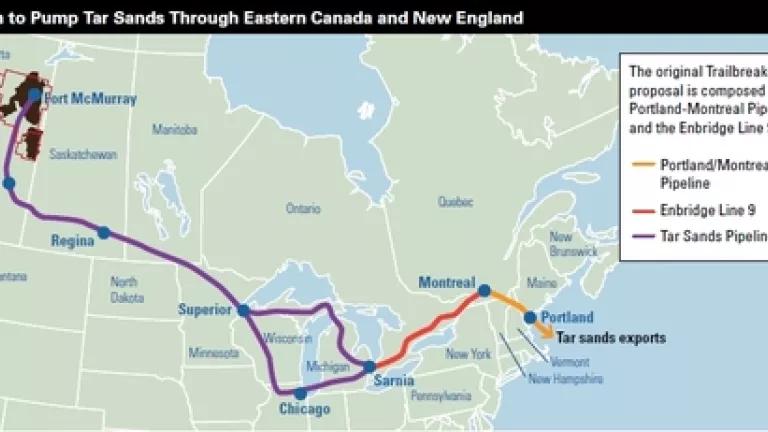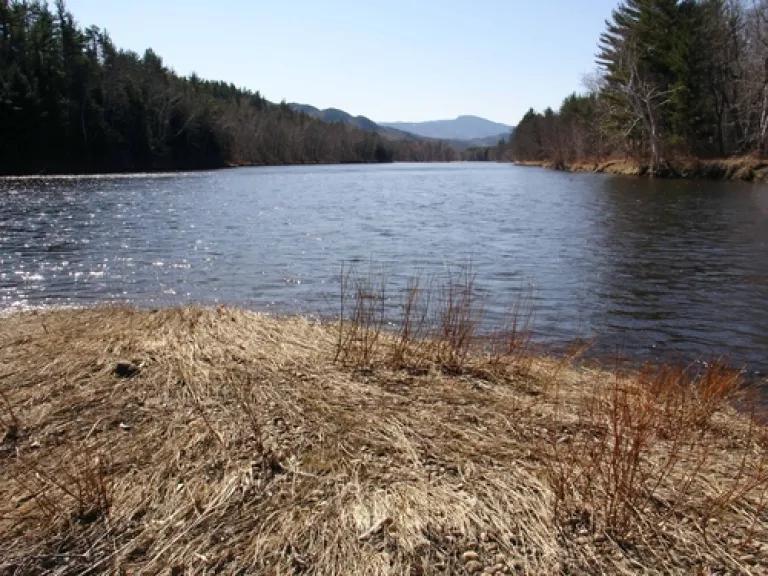In through the backdoor: Is Enbridge Inc. trying to bring tar sands to Central Canada and New England?

A decision being made by Canada’s National Energy Board (NEB) about a pipeline in Canada could open the door to bringing tar sands oil to Vermont, Maine, and New Hampshire as well as Ontario and Quebec. At this time, Central Canada and New England receive virtually no tar sands imports. But an alteration to the use and flow direction of oil pipelines in this region could change that. That is why over 41,000 comments are being sent to the NEB, Canada’s energy regulator, from citizens across the United States and Canada representing 11 organizations asking them to force tar sands pipeline company Enbridge Inc. to come clean on its long-term plan to ship tars sands eastward. The outpouring of concern comes because Canadian tar sands pipeline company Enbridge Inc. appears to reviving a plan originally announced in 2008 called Trailbreaker that would transport tar sands through Central Canada and New England.
In August of 2011, Enbridge Inc. filed a permit application with the Canadian National Energy Board for a project they call “Line 9 Reversal Phase I.” The permit for this project seeks to reverse the flow direction of about one quarter of the length of its Line 9 pipeline —from Sarnia, Ontario, to the Westover Oil Terminal, which is located outside of Hamilton, Ontario. This application may actually signal the rebirth of a much bigger plan (called Trailbreaker) originally announced in 2008 to pipe tar sands through Ontario, Quebec, and New England.
The original Trailbreaker plan would reverse the direction of oil flowing through two major pipelines—Enbridge Line 9 and the Portland/Montreal Pipeline. But under the plan, the pipelines would not carry conventional oil, but Canadian tar sands oil along an approximately 750-mile route. The pipelines’ route would run east through Ontario and Quebec, and down to the New England seacoast, finally ending in Portland, Maine’s Casco Bay for export.

Androscoggin River, a popular waterway that flows through Maine and New Hampshire, would be crossed by the Trailbreaker tar sands pipeline. Photo Credit: Ken Hoptop
Bringing tar sands to Central Canada and New England raises many concerns. First, bringing tar sands oil to New England would take this region off the path to embracing cleaner forms of energy. The extraction and development of tar sands oil - one of the largest industrial operations in the world - razes and fragments massive swaths of Canada's Boreal forest using enough energy to make tar sands oil production the fastest-growing contributor to Canada’s carbon pollution. Tar sands extraction destroys carbon-storing trees and wetlands on such a large scale it contributes to climate change. Carbon pollution from tar sands extraction and upgrading are estimated to be three to five times higher per barrel than production of a barrel of conventional Canadian or U.S. crude.
A more direct concern is the safety threat from tar sands pipelines. Tar sands pipeline spills can and do occur, and there are indications that they are more prevalent than conventional oil spills. After tar sands are extracted, it is blended with natural gas liquids or other light, volatile petroleum products that contain benzene, toluene, and xylene and then pumped through pipelines.
Tar sands diluted bitumen has organic acid concentrations up to 20 times higher than conventional crude oil, and it contains 10 times more sulfur. As diluted bitumen is pumped through pipelines, its temperature increases, amplifying the corrosive qualities of an acidic oil that has abrasive materials such as quartz and silicates suspended in the mixture. In a sense, tar sands oil that flows through a pipeline is like fast, hot, and toxic liquid sandpaper.
Midwestern pipelines, which have the longest history of transporting Canadian tar sands oil have spilled almost three times as much crude oil per mile of pipeline when compared to the U.S. national average. Tar sands diluted bitumen spills can be especially destructive to bodies of water, where protracted and costly cleanup efforts are required. In the region along Trailbreaker’s route, there are many special places at risk in both the U.S. and Canada including Lake Ontario, the St. Lawrence River, Victory State Forest, the Connecticut River and Casco Bay.
Already, the largest tar sands spill in U.S. history occurred under the watch of Enbridge Inc. In the summer of 2010, more than 800,000 gallons gushed from an Enbridge pipeline in the southern part of the state. The oil contaminated a 30-mile stretch of the Kalamazoo River, which required extensive dredging and also led to widespread health problems in neighboring communities.
NRDC and its activists are asking Canada's National Energy Board to look not only at the proposed project but at Enbridge’s long-term plan which could have ramifications to the United States. Now is the time to consider the full environmental impact of the larger project, including the safety impacts of tar sands pipeline to the environment, waterways and communities, and climate pollution from tar sands. Allowing Enbridge Inc. to move ahead with piecemeal proposals enables them to avoid the type of scrutiny that enables a full and complete debate on the merits of introducing tar sands to parts of the U.S. and Canada that are now considered tar sands free.
